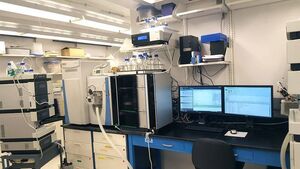Maynooth University make tropical disease breakthrough

Mass spectrometry was used to make the important breakthrough
THE boffins at Maynooth University researchers have made an important breakthrough on a serious but neglected tropical disease mycetoma using the technology of mass spectrometry.
This is a technique than can separate ionized particles – atoms, molecules – and by measuring ratios of charge to mass, can determine the particle’s molecular weight.
In 2024, Maynooth University was awarded nearly €1.8m by Research Ireland to fund high sensitivity liquid chromatography-mass spectrometry to enable detection and enumeration of biomolecules.

Mycetoma causes serious health problems for infected individuals living in low to middle income countries, and is endemic in tropical and subtropical environments. Surgery and, in advanced cases, amputations are often necessary to resolve the infection.
Maynooth University Professor Sean Doyle of the Department of Biology, and scientific researcher Cathal Murphy worked with teams from the Netherlands, Japan and Sudan to investigate the chronic skin infection.
Their findings, published today in Nature Communications, are an important milestone in the study of the disease.
It is caused by the fungus Madurella mycetomatis, which forms black grains inside the tissue of mycetoma patients that protects it from both the immune system and antifungal agents given to treat this infection.
The research, led by Associate Prof Wendy van de Sande of the Erasmus Medical Centre in the Netherlands and Specially Appointed Prof Imad Abugessaisa of Osaka University and RIKEN IMS in Japan, established the importance of iron to the virulence and disease-causing potential of Madurella mycetomatis.
Commenting on the findings and MU’s involvement, Prof Doyle noted:
“We were delighted to be invited to participate in this work because of our expertise in fungal natural product chemistry and mass spectrometry.” In the study, the consortium made use of an invertebrate animal model in which they could follow grain formation over time.
By performing RNA analysis on different time points, they were able to show that control of iron levels (iron homeostasis) in both the host and pathogen play an important role in mycetoma grain formation.





